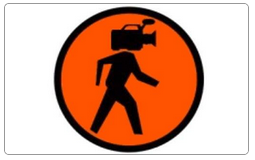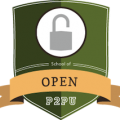For those who develop, edit, and use video, P2PU (Peer to Peer University) recently published a short course in creating Open Video. This course was created as part of the Open Video Forum in December 2012 at xm.lab.

The free and online course, totaling about 15 hours, teaches how to understand video files, coding, subtitling, video to web, video and HTML, encoding, and metadata.
They identify their primary audience as IT students learning about video, and software developers extending their knowledge to work with video.
The aim of the project is to eventually create an Open Video Handbook, which was inspired by the needs of the Mokolo Lab Project. Named after the biggest open-air market in Yaoundé, it was imagined as a way to integrate existing online information about African film industries with the goal of increased exposure for filmmakers and their films in African and its diasporas. It is currently establishing an online platform to distribute information and to network through one easy portal.
The developers of P2PU Open Video used a process they call “course sprint” to create the online course in one weekend. This methodology is based on the “book sprint” concept, originally developed by Floss Manuals, which puts a group of innovators in a room for a few days to intensively work, ending with a final product of a book or manual. Here, this process was used to create an online course.
During the course sprint, Mick Fuzz, who facilitated the activity, wrote a blog post to describe the course sprint process because he thinks that “this methodology can be of use to emerging groups of on-line educators creating open education resources (OERs).” He continues on the P2PU blog:
In the first half we took apart video files to investigate codecs and containers, get practical with sections on creating open video files and get into understanding and creating subtitles in an open and accessible way. In the second half, we took it much deeper with examples about using open video on the web, moving video metadata around and we dived into command line video manipulation and key-frame Datamoshing which is a surreal but fun way to learn about how digital video works…
You can find out more about their course creation process on the P2PU blog, and specific activities they used in the sprint.
At P2PU, they also encourage reviews and feedback of the Open Video course. A PDF version is also available.
 P2PU also hosts many other courses under its School of Open including how to write Wikipedia featured content, Finding the perfect Photo through free online resources, using open source software to add audio to video, and how to handle copyright around open data.
P2PU also hosts many other courses under its School of Open including how to write Wikipedia featured content, Finding the perfect Photo through free online resources, using open source software to add audio to video, and how to handle copyright around open data.



